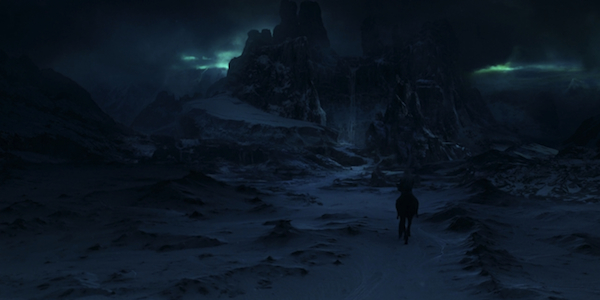Game Of Thrones: 5 Winners & 5 Losers In 'Oathkeeper'
1. Final Sequence Production Elements

Everything about the final sequence of this episode is great. Its great from a story perspective any scene that teaches us more about the White Walkers is a good thing but also as an example of the production elements that go into making great visual fantasy. Were talking specifically about production design, shot selection in editing, and cinematography.
Forget the grand castle and majestic interiors of Kings Landing; the most striking imagery in Game of Thrones is definitely north of the Wall. Its all about those Icelandic landscapes, and thats all down to the production designer. Choosing Iceland as a potential place to scout locations would have been a production design initiative, and the resulting images that we see on our screens are a beautifully picturesque yet wild and dangerous visualisation of the world beyond the Wall. Production design is also responsible for the way the characters look as well, not just the scenery, and the unsettling physical features of the White Walkers are a production element that are part of what makes this end sequence so good.
A good sequence also relies on the creative efforts of the cinematographers and editors. This may seem obvious, but exactly what you see, and equally importantly, what you dont see, are some of the most important decisions in filmmaking. When the White Walker pulls up his horse before the ice altar, you dont see him dismount, it simply cuts to the birds-eye shot of him walking, holding the baby. This is an unnatural movement, to cut from riding to walking, and it emphasises the supernatural nature of the White Walkers. Thats not to say that we see everybody mount or dismount their horse on Game of Thrones of course we dont, that would just be boring but in an earlier example, when Brienne mounts to leave Kings Landing, the shot hangs on Jaime, so the time frame is still accurate. We know she is mounting her horse while we are focused on Jaime, so to see her suddenly on horseback in the next shot is not unexpected. For the White Walker scene, the jump cut forces an unnatural jolt in the time frame, and this is a deliberate decision: we should be scared of the White Walkers, because they do not behave like us.
The birds-eye shot is also important for concealing visual information its not just there because it looks cool. The birds-eye view restricts close-up details, so we never see the face of the White Walker who approaches and takes the baby until the very end, once weve already wet ourselves from anticipated fear. Its why hes also out of focus in every other shot until the final moment the fact you cant see his face is what makes you afraid of him, not his scary features. Again, the things that we dont see are equally as important as the ones that we do, and along with the dramatic score and impressive visual effects, it helps to create a winning sequence for the end of the episode.